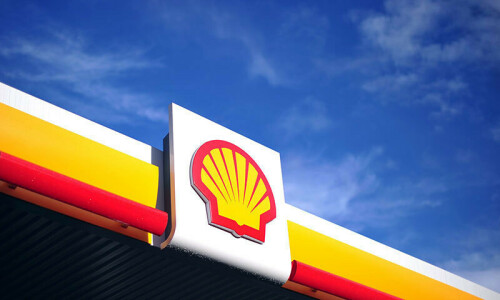KARACHI, July 17: An impressive export performance of 17 per cent growth in the fiscal year 2004-05 gave enough confidence to Commerce Minister Humayun Akhtar Khan to announce in the Trade Policy in July last year an export target of $20 billion. In the final assessment, a caution prevailed and a more realistic export target of $17 billion was fixed. On Monday, the minister in his Trade Policy 2006-07 speech announced final export figures at $16.46 billion for the fiscal year 2005-06.
Export proceeds of a little more than $500 million from defence products and services were clubbed together to push up export figures near $17 billion. This may be good for self-consolation but issues confronting the trading sector cannot be wished away by such an exercise.
With Pakistan’s import bill likely to close at $28 billion plus this end-June, the resultant trade gap of about $11.50 billion would not be easy to digest. The trade imbalance is almost equal to Pakistan’s official foreign exchange reserves. This trade gap is further aggravated by the imbalance shown in insurance and shipping services and there had been more outflow than inward transfers. Remittances, foreign debts and privatisation proceeds provided some temporary cushion. This cushion may prove to be too fragile to withstand the pressure of widening trade gap in coming days.
What is moral of the whole story? Pakistan’s international trade remains a gamble rather than a well designed and thought out strategy designed to respond to the fast changing situations. Even a cursory glance at month-wise tempo of exports during the fiscal year 2005-06 shows that there was a downslide since January this year.
In January 2006, exports were down by $206 million than the target. In February, the exports were short by $49 million. The export showed a small improvement of $37 million in March but then again went down by $69 million in April, $81 million in May and finally more than $200 million in June.
Even before January 2006, the tempo of exports during July-December 2005 was far from satisfactory. In four months, the exports were hardly close to proportionately monthly targets. What were export planners doing all these 12 months of 2005-06? Was this downslide taken notice of in the recent meeting of the Export Promotion Board chaired by Prime Minister Shaukat Aziz?
Let’s look at the export structure from another angle. Pakistan has signed a free trade agreement with Sri Lanka. The official export figures for Sri Lanka during July-February 2005-06 tell us that these came down to $102.32 million from $110.08 million in 2004-05. After an FTA it was expected that Sri Lanka would be a conduit for a variety of Pakistan goods for re-export to India. It did not happen. Why?
Another question that begs for an answer is tempo of Pakistan’s trade with Saarc countries after the signing of Safta. The powerful lobby of super patriots in Islamabad is perhaps not yet ready for a normal and smooth flow of trade between the Saarc countries. Why cross-border trade possibilities with India in Punjab and Sindh are not being considered?
China remains Pakistan’s big trade partner so far as imports from official and unofficial channels are concerned. But exports to China are very dismal despite an Early Harvest agreement. Total exports to China during the first eight months of 2005-06 amounted to hardly $300 million. A 45 per cent increase in exports during 2005-06 looks impressive but figures are far too unimpressive and insignificant. Hong Kong was a dumping ground for Pakistan’s yarn for too long. It remained a god market for Pakistan’s exports. In eight months of 2005-06, total exports are hardly $435 million.
Afghanistan is one country where exports had more than doubled to about $644 million in eight months of 2005-06. But this improvement in exports was at the cost of Pakistan’s cement and wheat flour and eventually the government had to enforce a regulatory duty.
There is a lot of talk about export potential available in central Asian republics. Envoys’ conferences were held. The end result is that during eight months of 2005-06, total exports to Kazakhstan, Kyrgyzstan, Tajikistan, Turkmenistan and Uzbekistan were not even $15 million. Indian exports exceed billion dollars as it is main supplier of a variety of consumer items, hospital equipments and other goods.
Indonesia and Malaysia are the two brotherly Muslim countries with which Pakistan seeks FTA. Pakistan’s exports to these two countries are showing downward trend in 2005-06. There are improvements in export to South America, Africa and East Europe in ratios but these are insignificant when it comes to hard cash.
On the import side, almost $6 billion have been claimed by petroleum and products. Increasing number of automobiles on roads has pushed up demand for oil. Automobiles worth more than $1.5 billion have been imported in completely built-up (CBU) by the importers and in semi knock down condition by the assemblers to meet the rising demand. What is the identity of this neo rich class? How many of them would be able to pay back their auto loans to banks and leasing companies?
The government never releases details of imports. But there are reasons to believe that quite a big chunk of imports is consumer items. These include edible—cheese, butter, honey, juices, beverages, cosmetics, toiletries, apparels, home textile, furniture, jewellery and what not.
Pakistan’s economy is coming under increasing pressure of a double-edge sword, the fiscal deficit and the current account deficit. The business and trade look for liberal loaning from banks that too are under pressure of a huge debt portfolio of more than one trillion rupees. A State Bank report has obliquely drawn government’s attention to vulnerable fiscal indicators. It is in this backdrop that the commerce minister wants to achieve $18.6 billion export in 2006-07 and bring down import from the $28 billion level.















































Dear visitor, the comments section is undergoing an overhaul and will return soon.